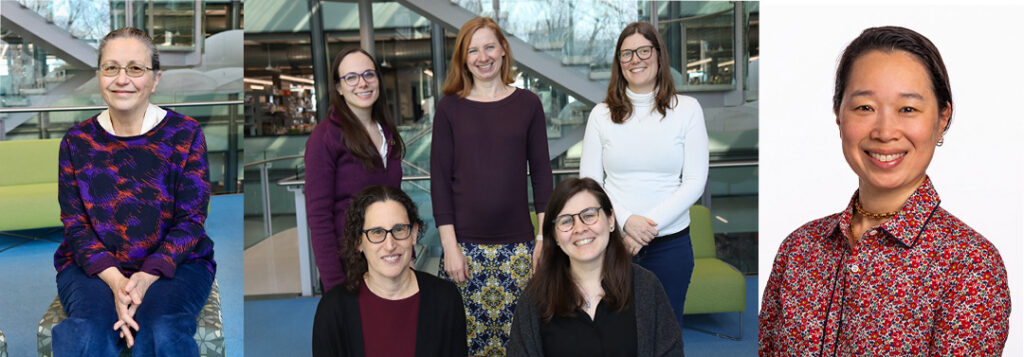Honoring our new women faculty members

International Women’s Day, celebrated annually in early March, seems an apt time to collectively highlight the women faculty hired within the past year. Among them are Assistant Professor Erin Stache, Assistant Professor Alice Kunin, Professor Sharon Hammes-Schiffer, and A. Barton Hepburn Professor of Chemistry Michelle Chang.
Along with Associate Professor Leslie Schoop, Assistant Professor Marissa Weichman, Associate Professor Jannette Carey, and David B. Jones Professor of Chemistry Annabella Selloni, the number of women faculty members at Princeton Chemistry stands at eight.
In observation of 2024 International Women’s Day, we offer this short piece broadly outlining the research of our four new women faculty members.
Erin Stache
Catalysis/Synthesis
Hired in May of 2023, Stache came to Princeton last summer from Cornell University. Her research aims to integrate diverse fields to pioneer fresh advancements in materials science and synthesis, including organic chemistry, photochemistry, inorganic materials, and polymer chemistry.
One major aspect of her work is finding solutions for a more sustainable plastics economy, especially addressing the inadequate strategies for managing these materials at the end of their lifecycles. This research involves the application of innovative catalytic methods to formulate previously unexplored strategies for polymerization. Central to this approach is the discovery of novel monomers that unlock access to unprecedented materials.
Alice Kunin
Spectroscopy/Physical Chemistry
Kunin, who joined Princeton last June from postdoctoral work at Stony Brook University, focuses on developing novel spectroscopic approaches that combine surface-sensitive techniques with advanced laser methodologies to probe the ultrafast dynamics of optically excited states in materials. The Kunin Lab’s goal is to understand how electron, hole, and quasiparticle dynamics at surfaces and interfaces evolve on femtosecond to picosecond timescales.
These key mechanisms and reaction pathways underlie the efficiency of optoelectronic devices and photochemical reactions that are central for renewable energy applications.
Sharon Hammes-Schiffer
Spectroscopy/Physical Chemistry and Theoretical Chemistry
The appointment of Hammes-Schiffer was announced last July, and she arrived at Princeton Chemistry from Yale University in January of this year. This renowned senior faculty member has made pioneering contributions to understanding the quantum mechanical role of the proton in molecular systems and is perhaps best known for developing a general theoretical formulation for proton-coupled electron transfer (PCET) to investigate important chemical and biological systems.
Hammes-Schiffer’s research centers on the development and application of theoretical and computational methods to understand the fundamental physical principles underlying chemical processes. Research is pursued in three general areas: PCET transfer reactions, enzymatic processes, and non-Born-Oppenheimer electronic structure methods. Overall, she seeks to elucidate the fundamental physical principles underlying charge transfer processes and catalysis, as well as to assist in the interpretation of experimental data.
Michelle Chang
Chemical Biology, Catalysis/Synthesis, and Inorganic Chemistry
Chang was hired last November, joining Princeton Chemistry from the University of California, Berkeley. She uses the approaches of mechanistic biochemistry, molecular and cell biology, metabolic engineering, and synthetic biology to address problems in human health and the environment.
Her lab is interested in the discovery, characterization, and engineering of new enzymes and biosynthetic pathways to develop new biocatalytic methods to generate molecular diversity and synthesize diverse small molecule targets. For example, Chang studies metalloenzymes that carry out selective C-H activation chemistry to achieve a variety of downstream functionalization, and the metabolic engineering of different cell processes in order to carry out chemical synthesis in living cells by microbial fermentation.
